Did you know there are too many animals on Planet Earth to count? That’s pretty impressive, but it does make it hard to keep track of them all.
Luckily, some clever scientists came up with a way to organise and group different species using what’s known as animal classification. This is a complex system that categorises animals based on common characteristics and traits, so they’re easier to organise into groups.
Not sure how animal classification works? We’ll get you up to speed in this comprehensive guide, which includes a free animal classification chart for you to download, print out and take away.
What is an animal?
Sure, it may sound like a pretty straightforward, self-explanatory question. But have you ever stopped to consider what an animal actually is? And perhaps more importantly, just how many animals there are on our planet?
If the answer’s no on both counts, then let us rectify that.
Animals are living creatures that move, eat, sleep and live of their own free will. They breed and produce offspring to ensure the survival of their species, relying on senses like sight, smell, hearing and touch to interact with the world around them.
Remarkably, scientists are reluctant to even estimate just how many animals there are on our planet. Some live on land, some live in the sea, and some live in the sky, but it’s impossible to put a number on quite how many mammals, insects, reptiles, and birds there are.
Indeed, there are so many animals on planet Earth that scientists developed a way to organise them into logical groups, simply so that they could be researched and referenced more easily. And thus, animal classification was born.
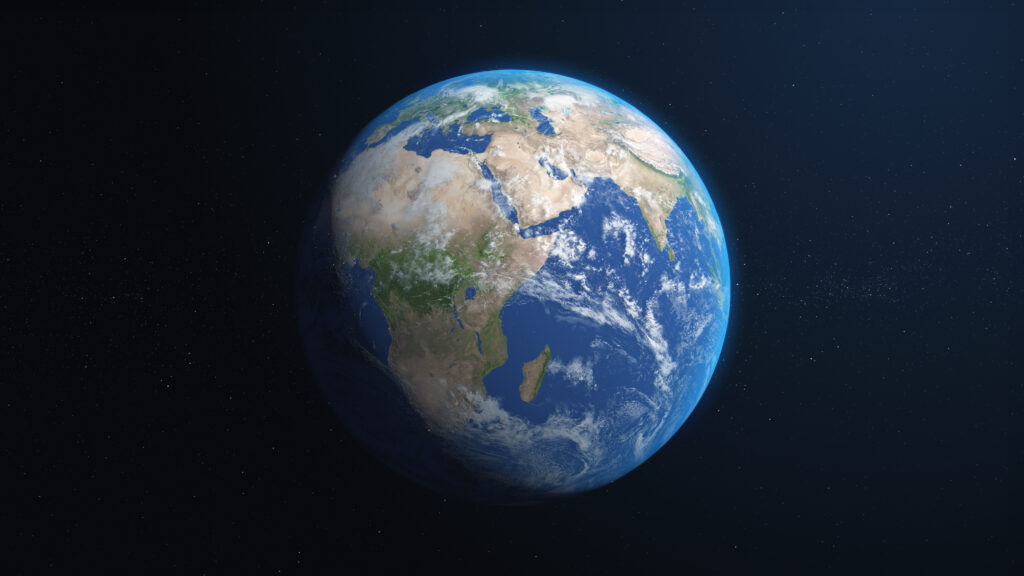
What is animal classification?
Animal classification is when different species of animals are identified, named and organised into groups based on a set criteria. Swedish biologist Carl Linnaeus developed the system in the 18th century, referring to it as “binomial nomenclature”. You don’t need to remember that fancy term, but you do need to know the basics of how animal classification works.
Essentially, there are seven categories within the animal classification system, into which every animal on Earth is sorted. This starts with “kingdom”, which is the largest group of animals, and trickles down to “species”, which is the smallest.
- Kingdom
- Phylum
- Class
- Order
- Family
- Genus
- Species
Within “kingdom”, animals are divided into two main groups: vertebrates and invertebrates. This is pretty much the starting point for classification, with animals further categorised until their species can be easily defined.
With that in mind, let’s take a closer look at the main differences between vertebrates and invertebrates.
What is a vertebrate?
Getting to grips with what vertebrates are is super simple. The term refers to any animal that has a backbone inside their body. Yep, you’re right, that includes you!
Of course, vertebrates are a pretty huge group of animals, comprising everything from fish and amphibians to mammals and reptiles. But that’s where animal classification comes in, neatly organising each lifeform to the point where its exact species is clear.

Which animals are vertebrates?
Let’s take a closer look at all the animals that fall into the vertebrate camp, starting with one of our favourites here at Deep Sea World: fish.
Fish
Fish are vertebrates that live in our seas and oceans, as well as in freshwater rivers and lakes. While they may have a backbone like mammals, that’s the only similarity between them and other vertebrates.
One of the standout features of fish is the fact that they don’t breathe air. Instead, they have gills that allow them to breathe underwater. They’re also cold-blooded, which means they’ve evolved ways to survive in waters of different temperatures.
Fish can be microscopically small or absolutely huge. Indeed, it’s hard to believe that you get animals like the sand tiger shark (Carcharias taurus)in the same animal classification category as the likes of porcupine pufferfish (Diodon holocanthus)and the big-bellied seahorse (Hippocampus abdominalis).
Amphibians
As their name suggests, amphibians are just as happy on land as they are in water (because they’re amphibious, right?). These cold-blooded animals start life with gills but then develop lungs as they mature, so they’re born in water but migrate to land when they grow.
It can be almost hard to believe that amphibians like the golden mantella (Mantella aurantiaca)frog and the weird-looking axolotl (Ambystoma mexicanum)are vertebrates. But just like us humans, these animals have a spine, so they’re lumped into the same category as us (well, for a little while at least).
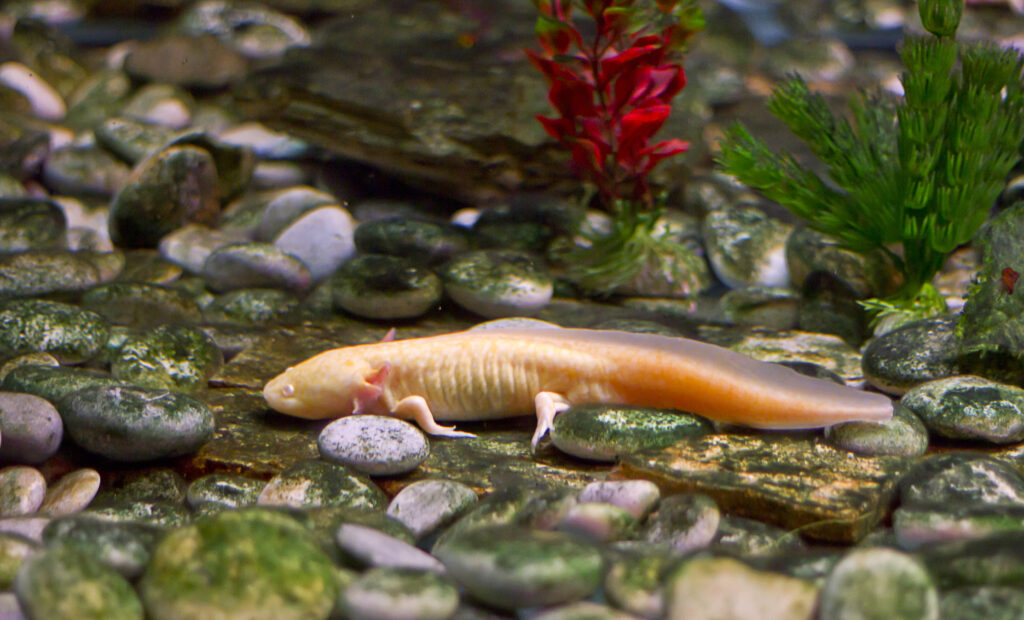
One other thing to note about amphibians is that they’re cold-blooded, so can’t self-regulate their body temperature. That’s why many of them hibernate during the winter as a means of survival.
Reptiles
Reptiles look a lot like dinosaurs. And guess what? That’s because they are!
Yes, reptiles are some of the oldest animals on our planet, with some species – including crocodiles and alligators – having survived the asteroid that wiped out the dinosaurs. Like amphibians, these cold-blooded animals can’t regulate their body temperature, so tend to seek warmth whenever it’s available.
Reptiles are a super diverse group of animals, ranging from snakes like the royal python (Python regius)to the huge American alligator (Alligator mississippiensis). They’re also incredibly adaptive, with some living in arid deserts and others being semi-aquatic, spending most of their lives in temperate waters. Perhaps that’s why they’ve survived and evolved for over 200 million years!
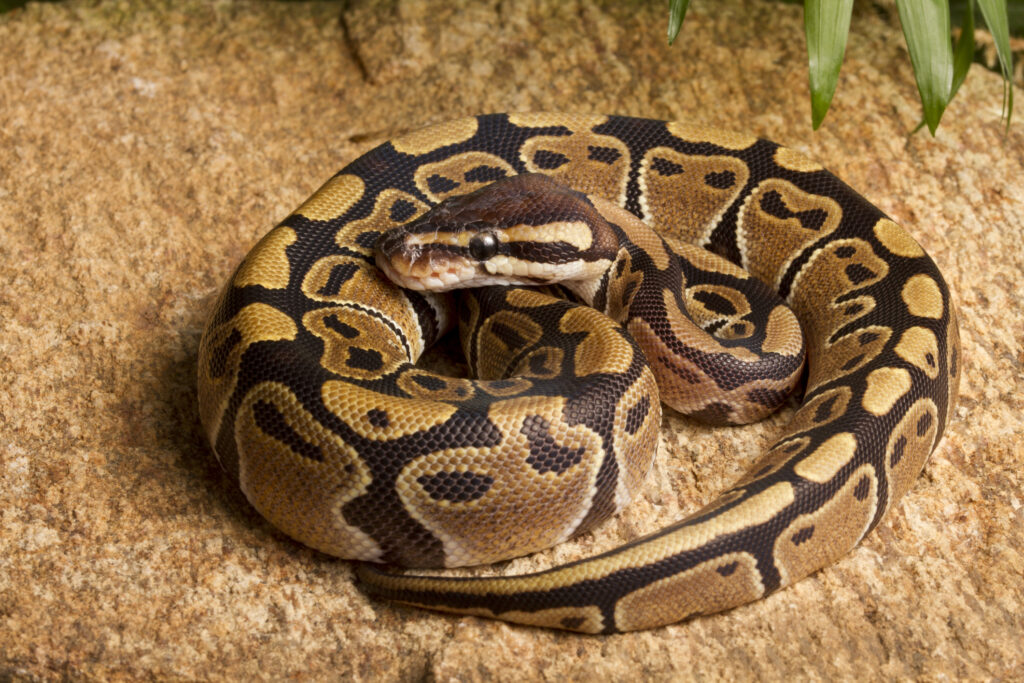
Birds
Like their reptilian counterparts, birds are a remarkably old group of animals, with all modern species believed to have evolved from a handful of species that lived during the time of the dinosaurs. That means your friendly neighbourhood blackbird (Turdus merula) has a much longer lineage than you might have expected.
Unlike reptiles and amphibians, however, birds are warm-blooded, so don’t need to make a special effort to survive in different temperatures. All birds lay hard eggs in nests and many species mate for life, pairing up with the same partner over their lifespan.
Mammals
Mammals are among the most diverse groups of animals on the planet. They breathe air, are warm-blooded, and are found on virtually every continent on Earth – as well as in our seas and oceans.
Such is the diversity of mammals that this alone shows why animal classification is needed. Mammals include us, humans, along with over 6,400 extant (meaning existing) species – from primates and seals to the biggest mammal that has ever existed: the mighty blue whale (Balaenoptera musculus).
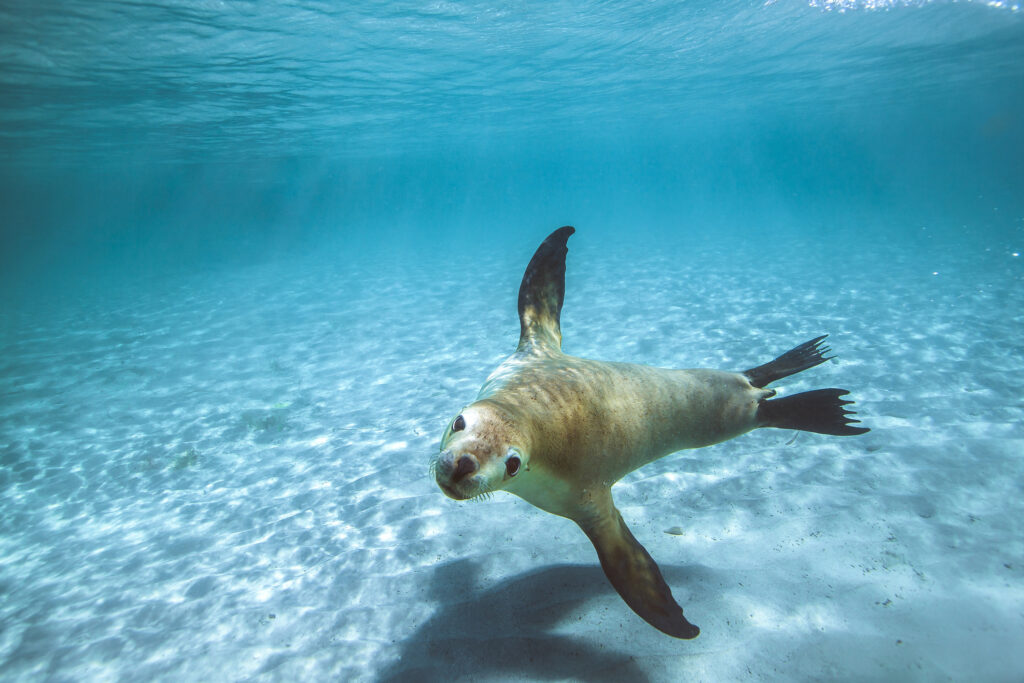
What is an invertebrate?
Now that you know what vertebrates are, it shouldn’t be too tricky to work out what invertebrates are. Can you guess?
That’s right, invertebrates are animals that don’t have a backbone. These animals usually have a soft body or else a hard outer casing covering their bodies, and range massively in size and appearance – from microscopic mites we can scarcely see to the colossal squid (Mesonychoteuthis hamiltoni) that lives in the depths of the deep sea.
Invertebrates account for the vast majority of animals on planet Earth, around 97% in fact. To put that figure into perspective, scientists estimate there to be around 66,800 species of vertebrates, with over 1.3 million invertebrates. Incredible!

Which animals are invertebrates?
Here’s a brief look at all the animals classed as invertebrates, including a definition and some example species.
- Molluscs: Molluscs are invertebrate animals protected by a hard shell covering their otherwise vulnerable soft bodies. This is one of the largest groups of invertebrate animals, with around 76,000 unique species – ranging from clams, oysters, and squid to the impressive African land snail (Achatina fulica).
- Arachnids: The squeamish among you may want to look away now, as we introduce arachnids, which of course include spiders and scorpions. These classic creepy crawlies have eight legs and no antennae, which is how they’re identified vs their insect counterparts.
- Echinoderms: Echinoderms are marine invertebrates that are among the most unique animals on the planet. The family includes starfish like the brittle star (Ophiuroidea)and chocolate chip star (Protoreaster nodosus); sea urchins, sand dollars, and sea cucumbers. Interestingly, most echinoderms have a five-pointed shape, if only very loosely.
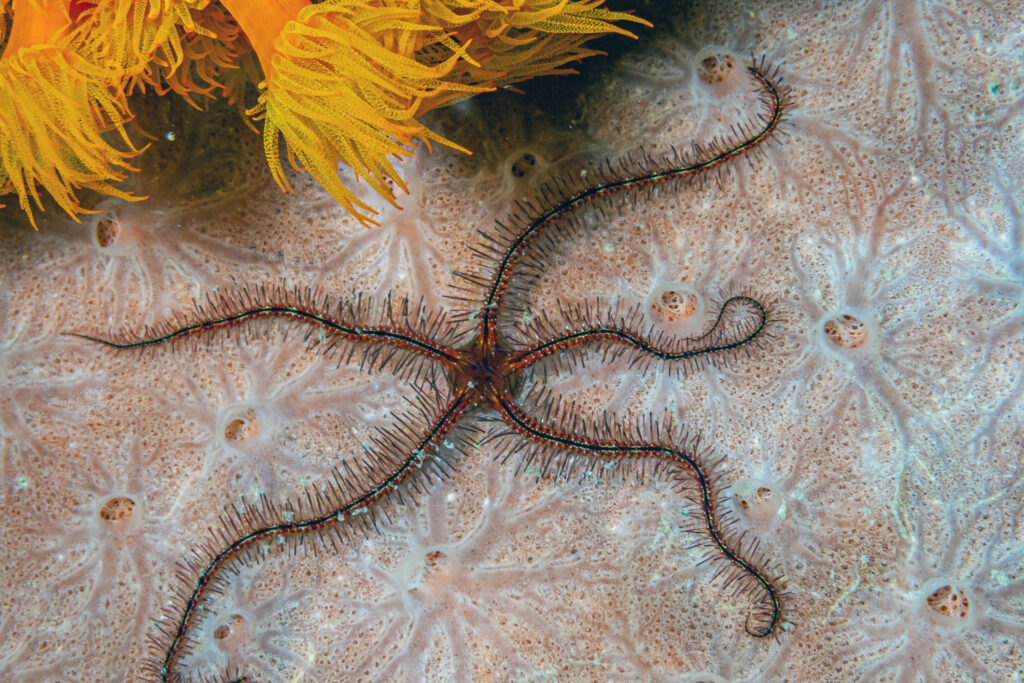
- Insects: Not only do insects represent the biggest group of animals on the planet, but also one of the most diverse, with over 1 million extant insect species around the world. It’s almost impossible to comprehend the diversity of the insect family – from the humble ladybird (Coccinellidae) to the spectacular Atlas moth (Attacus atlas).
- Crustaceans: Crustaceans are shell-covered invertebrates that live in semi-aquatic habitats, including in both fresh and saltwater. You should be pretty familiar with the most common types of crustaceans, which include European lobsters (Homarus gammarus), prawns, crabs, and crayfish.
- Annelids: The Annelid family includes all segmented worm species, from the wriggly earthworm (Lumbricina) you’ll find in your garden to the blood-sucking leech (Hirudinea). Annelids represent some of the oldest animals on our planet, with scientists reckoning that segmented worms have been around for over 500 million years.
- Cnidaria: Cnidaria are among the most unique and widely studied aquatic animals on our planet. The family includes all jellyfish species, as well as anemones and coral. There are thought to be over 11,000 species of Cnidaria in our seas and oceans, from huge coral reef systems down to the smallest aquatic parasites.
Download our animal classification chart
By now you should have a better idea of how animals are classified, along with the differences between vertebrates and invertebrates. We know there’s a lot to learn, so we’ve created a visual guide on animal classification – perfect for younger readers looking to get to grips with how animals are categorised into their unique groups and species.
You can download our animal classification chart to print off and reference whenever you need it, right here!
We hope you’ve picked up a few tips and insights into what animal classification is and how it works. Ready to learn more? Book your tickets and join us at Deep Sea World, where our free spotters’ guide provides the perfect way for young wildlife enthusiasts to put their knowledge to the test.
